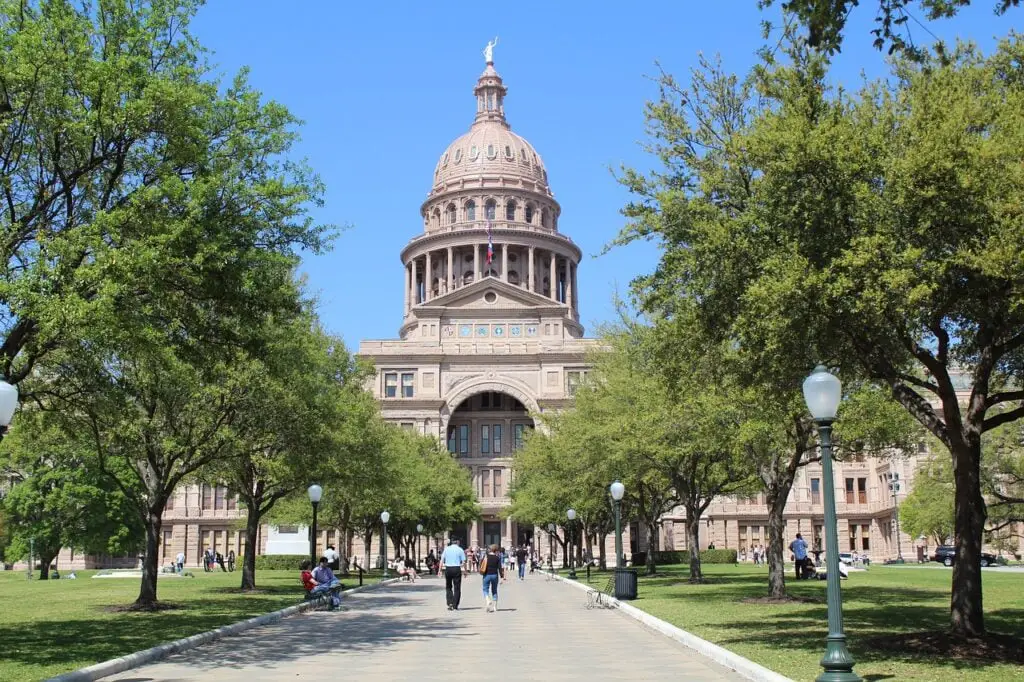As the global economy continues to evolve, countries are increasingly adopting mixed economic systems. By combining elements of capitalism with elements of socialism, a mixed economy seeks to reap the advantages of both systems while avoiding their negative aspects. We will explain the major mixed economy examples (that is, some examples of mixed economic countries). In each country, we will discuss how it has implemented its own unique mix of free market ideals and state involvement, exploring the benefits and drawbacks each model offers.
Before we discuss these mixed economy examples, what is the term all about?
What is a mixed economy?
A mixed economy is an economic system that combines elements of both capitalism and socialism; it means both private and public enterprise, as well as government intervention, play an important role in the production of goods and services. Some examples of mixed-economy countries include the United States, Canada, France, Germany, Japan, etc.
In a mixed economy, the government plays a role in regulating and providing certain services, but there is also a private sector. Private businesses are allowed to own property and produce and sell goods and services, but they are subject to government regulation. The government may also provide some public goods and services, such as education and infrastructure.
See also: Mixed Economy Advantages
What is considered a mixed economy example?
Any country that must be considered as a mixed economy example must have a mix of public and private ownership; that means any economic system that features characteristics of both capitalism and socialism and which starts with a free market foundation and then mix in various degrees of government regulation and public ownership or provision of goods and services is considered a mixed economy.
In real life, almost all countries can be considered mixed economies because it is difficult for any country to ensure the stability of its economy without some level of government regulations and interventions. However, the best examples of mixed economies are the countries with significant government regulations aimed at controlling the economy while also allowing the private ownership of property and business, together with the freedom to determine what to produce and the price to sell their products.
In the United States as an example of a mixed economy, the federal government owns some land (such as national parks) and businesses (such as Amtrak), but most properties are privately owned. Also, France as a mixed economy example also allows both private ownership and government ownership of businesses and means of production, but in contrast to that of the United States, the government of France owns a larger share of businesses.
Another thing to consider in mixed economies is that they tend to be more stable than systems that are purely capitalist or socialist because they strike a balance between the two extremes. However, they can also be less efficient than either pure capitalism or socialism because of the bureaucracy involved in regulating the economy.
Mixed Economy Examples
- The United States of America (USA)
- Canada
- The United Kingdom (UK)
- South Africa
- Japan
- France
Other countries that are mixed economy examples include Germany, India, Italy, Singapore, South Korea, and Spain.
The United States as a mixed economy example
The United States is often considered to have a mixed economy because it has elements of both capitalism and socialism. Under capitalism, private individuals or businesses own property and produce goods or services for profit. In a socialist economy, the government owns the property and provides some services, with the ultimate goal of promoting equality. Regulations on businesses, for example, help to protect workers and the environment, while the government also provides social welfare programs like Medicare and Medicaid and owns some businesses such as the U.S. Postal Service (USPS).

Since the government provides many services that benefit all citizens, such as education, roads, and public safety, and also taxes citizens to fund these programs, the United States can be said to be a good example of a mixed economy, with a larger aspect of capitalism than socialism. This mix of public and private ownership gives the United States its unique economic structure.
The benefit of adopting a mixed economy in the United States is the promotion of competition and innovation through capitalism. In general, capitalist economies are more efficient than socialist ones at generating new ideas and products. However, too much capitalism can lead to monopolies that stifle competition. In order to overcome the challenge posed by capitalism, the U.S. government regulates certain industries to prevent monopolies from happening and also supports research and development through programs like the National Science Foundation. This mix of public and private investment helps keep the US economy dynamic.
Related: Disadvantages of a Mixed Economy
Is Canada a mixed economy?
Canada is a good example of a mixed economy for several reasons; first, the Canadian government is involved in regulating certain aspects of the economy, such as transportation and communications (regulations, are characteristics of socialist economies). Secondly, the government has also traditionally been involved in providing public services and goods, such as education and health care. The third reason why Canada is an example of a mixed economy is the fact that many businesses are owned by private individuals who produce what they want and fix the prices for their products (this is a feature of capitalism).
The combination of the government involved in some businesses as well as being in charge of regulations of certain industries while the private individuals have the right to own property and businesses makes Canada a good example of a mixed economy.
Is the UK a mixed economy?
The UK is mostly seen as a free market economy, but it also has some socialist policies and programs such as the National Health Service (NHS), which makes it a mixed economy.
The United Kingdom is considered a mixed economy example because the government allows private ownership of certain businesses but owns and controls some. In the UK, the government makes decisions relating to road building, schools, waste management, the supply of medicines in hospitals, etc.
The private sector is significant in the UK economy with most businesses in the manufacturing, retail, and service companies; the private sector also provides most of the jobs in the country.
See also: Neoliberal Economics – Neoliberalism and the Economy
Is France a mixed economy?

France is an example of a mixed economy that leans more towards socialism than capitalism. The French government plays a significant role in the economy, particularly through its ownership of key industries such as electric power, transportation, and defense. The government also exerts considerable control over the labor market, setting minimum wages and regulating working conditions. In addition, the state provides a safety net of sorts for workers by mandating generous vacation days and worker protections.
All of these factors make it clear that the French government wields considerable power over the country’s economic activity. However, there are also several important aspects of the French economy that resemble a mixed economy.
Most notably, France has a large private sector that accounts for a significant portion of economic activity. Private companies are responsible for producing many goods and services in France, including consumer goods, manufacturing products, and financial services. In addition, while the government does have some ownership stake in key industries, most businesses in France are privately owned.
Furthermore, while the government does play a role in setting prices for some goods and services (such as utilities), most prices in France are determined by market forces. And while the state does provide some subsidies to industry (particularly in agriculture), these subsidies are not as prevalent as they are in command economies.
Is Australia a mixed economy?
While Australia’s economy is mixed, it leans more towards a free market approach than many other mixed economies. For example, the Australian government does not heavily regulate businesses or intervene in the economy to protect specific industries. Instead, it relies on market forces to allocate resources efficiently; hence, it is an advanced market economy with a high per capita income and a well-developed social safety net. The Australian economy is diversified, with significant agriculture, mining, manufacturing, and service sectors.
Related: Is Socialism Good?
Is Japan a mixed economy example?
Yes, Japan is an example of a mixed economy because it has both characteristics of capitalism and socialism. After World War II, the country was rebuilt with the help of US-funded loans and aid. The government took control of key industries, such as transportation and energy, while encouraging private enterprise in other industries. This mix of state control and private enterprise helped fuel Japan’s economic miracle in the second half of the 20th century.

Today, Japan’s economy is still a mix of socialism and capitalism. The government continues to own or control some key businesses and services, such as the Nippon Telegraph and Telephone Corporation, the Japan Post Holdings Company, Ltd., healthcare, etc. The Japanese government owns most stock in these companies with the remaining stock owned by private holding companies or private individuals. There is also a thriving private sector, which includes large corporations like Sony and Toyota.
While some people argue that Japan should move further towards capitalism, others believe that the current mix of socialism and capitalism works well for the country.
See also: Traditional Economy Characteristics
Is South Africa a mixed economy?
South Africa is considered a mixed economy because it has features of both capitalism and socialism. The government owns many businesses and industries, such as utilities and transportation, while private companies own others. There is also a mixture of private and public ownership in some industries. South Africa’s economic policies are designed to promote equality and reduce poverty, which shows it has more socialist policies. The government provides free education and health care, as well as housing subsidies. It also imposes high taxes on the wealthy to fund social welfare programs.
Some examples of state-owned enterprises in South Africa include Eskom, Transnet, Denel, and the Post Office. The state-owned enterprises (SOEs) play critical roles in the economy of South Africa in terms of providing the infrastructure and services on which the economy depends such as the generation of electricity, freight logistics, commuter transport, telecommunications, and provision of water.
Is Brazil a mixed economy example?
Brazil is a mixed economy example, based largely on a free-market system but with some government regulations and controls such as limitations on trade and on industrial pollution.
The government controls industries such as oil, gas, electricity, telecommunications, and transportation. It is also responsible for regulating many other sectors including agriculture, mining, manufacturing, construction, and commerce. In general, the government seeks to promote economic growth and reduce poverty through a variety of means including infrastructure investment, social welfare programs, and market regulation.
Conclusion
There are various types of mixed economies, but they all share one common characteristic: a mix of private and public ownership and management of economic resources and decision-making.
A mixed economy may be characterized by the following:
- Private ownership of property and businesses, but with some government regulation and oversight to protect consumers and promote competition;
- Both private businesses and government agencies providing goods and services;
- A market-based system for the allocation of resources, but with some government intervention to correct for market failure or to promote social welfare;
- Income redistribution through taxation and social welfare programs to reduce poverty and inequality.
The most well-known example of a mixed economy is probably the United States, which has more of a capitalist free market system with extensive government regulation, income redistribution through Social Security and other government programs, and a relatively high level of economic inequality.
Other mixed economies examples include France, Germany, Japan, Singapore, India, South Africa, Argentina, Brazil, etc. Mixed economies can take many different forms, and there is no one “right” way to structure one. Each country tailors its own mix of public and private involvement to suit its own unique needs and preferences.
Last Updated on November 3, 2023 by Nansel Nanzip BongdapNansel is a serial entrepreneur and financial expert with 7+ years as a business analyst. He has a liking for marketing which he regards as an important part of business success.
He lives in Plateau State, Nigeria with his wife, Joyce, and daughter, Anael.
